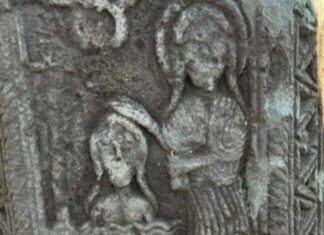By Artsvi Bakhchinyan
YEREVAN — In the run-up to the centenary of the Armenian Genocide, more and more incidents and details came to light, many touching on unexpected subjects and geographic settings. In 2012, during a visit to Yerevan to take part in the “Strategies of (Un)Silencing” conference, organized by the late Armenian-American art historian and curator Neery Melkonian, the famous contemporary Indian writer Amitav Ghosh presented a lecture based on his work, “Shared Sorrows: Indians and Armenians in the prison camps of Ras al-Ain, 1916-1918,” and it came as a major revelation to all of us.(See the full text of the paper in amitavghosh.com/blog/?cat=23.)
We learned that in April 1916 a large number of British-Indian troops fighting in Iraq fell prisoner to the Ottoman army. Some of them were sent to the prison camp of Ras al-Ain in northern Syria to work on the railroad line, this at a time when thousands of Armenians filled the deportation routes. Indian and Armenian prisoners crossed paths and their lives sometimes intertwined. Years later, Sisir Sarbadhikari, who had been a volunteer in the Bengali emergency aid organization, wrote a memoir based on his diary of his years in the Middle East. This Bengali work, published in 1958, received little attention at the time and was soon forgotten. Amitav Ghosh presented us with some of the contacts Sarbadhakari had with Armenians in those years.
This reality, previously unknown to specialists in the Armenian Genocide, found an echo in a July 13, 1919 article published in Zhoghovurt, an Armenian newspaper in Constantinople. It told the truly moving story of an Armenian orphan boy whom an Indian soldier had rescued from Turks and delivered to the director of an Armenian school. The author of the account was Mesrob Sahagian (1889-1968), a lawyer and editor from Malatia who, under the pen name Sahag Mesrob, contributed to the Armenian press of Constantinople (Istanbul), France and the United States between 1910 and 1919.
We here offer Sahag Mesrob’s account, especially for those interested in the Armenian genocide and Armenian-Indian relations.








